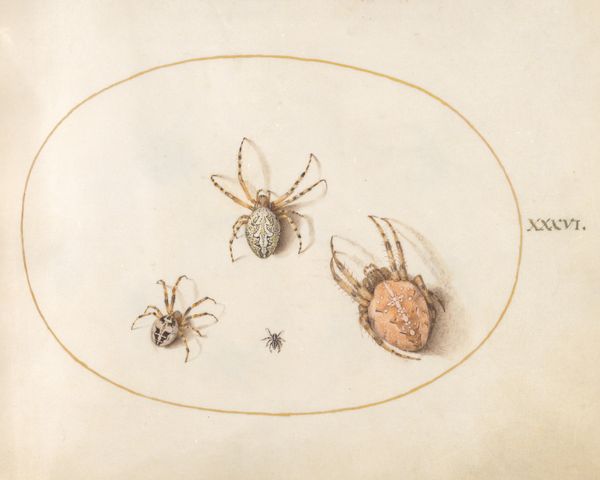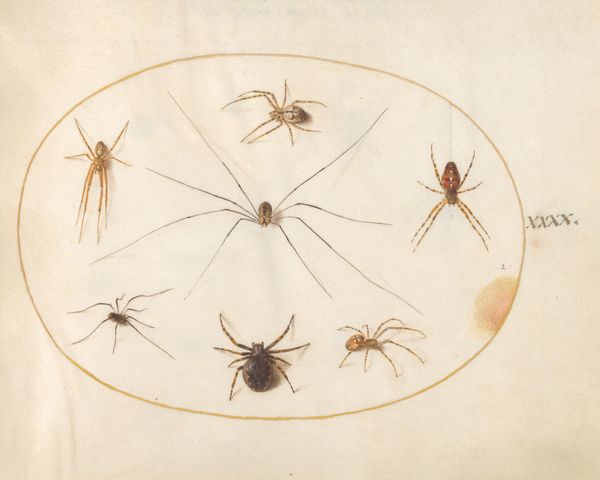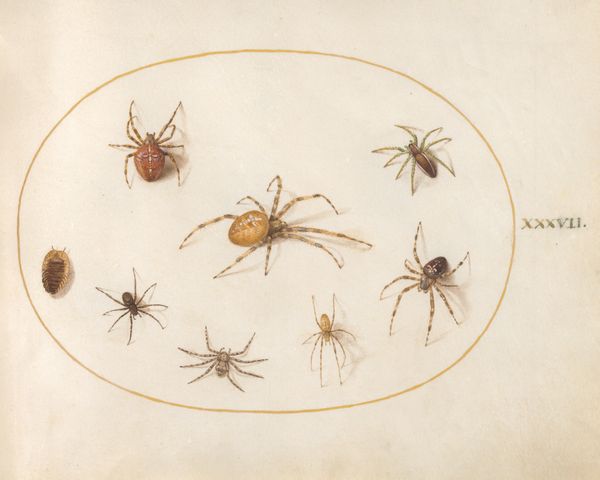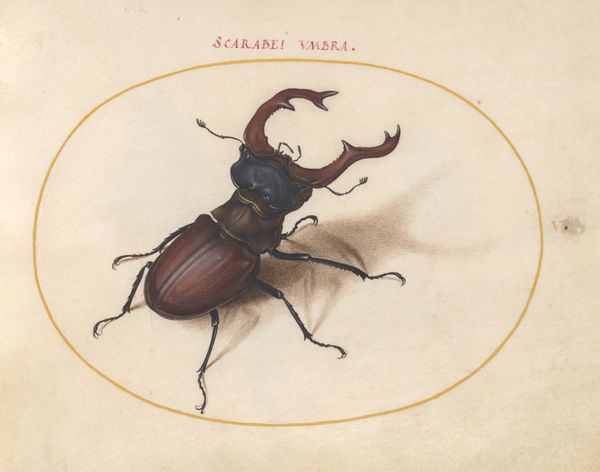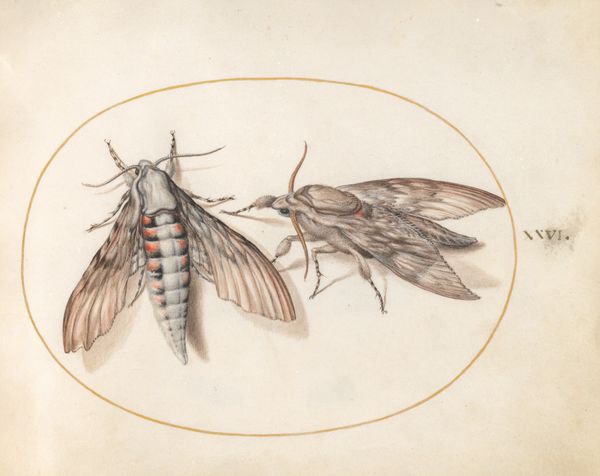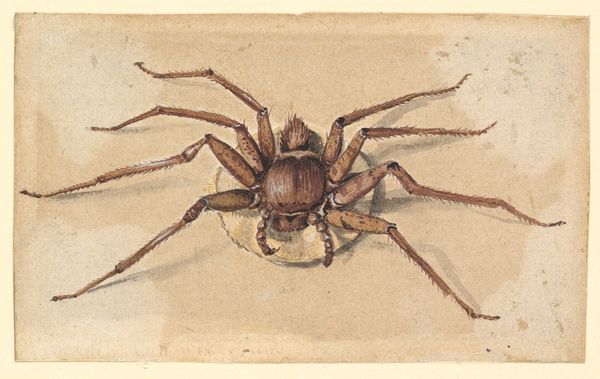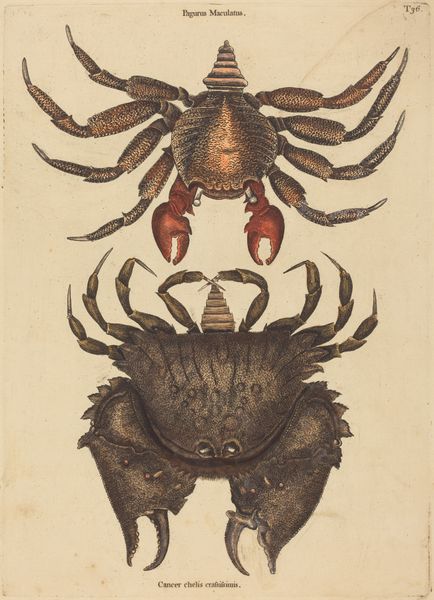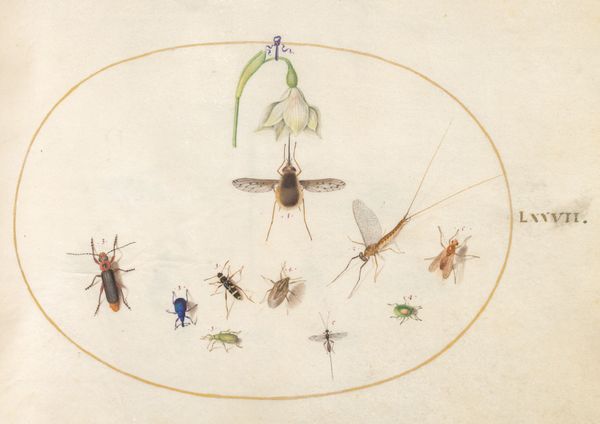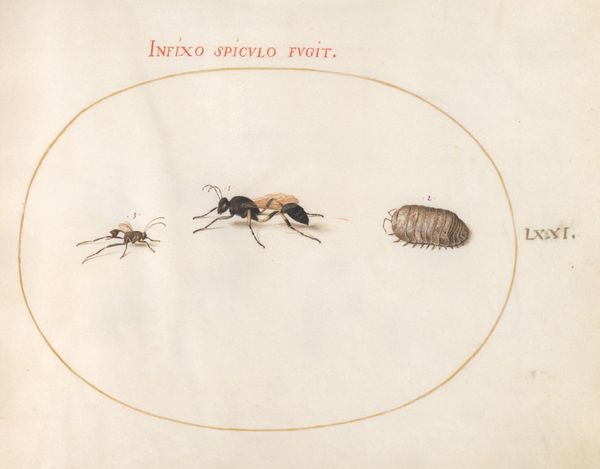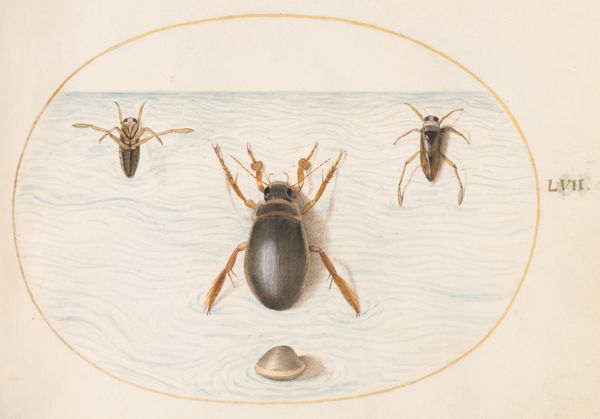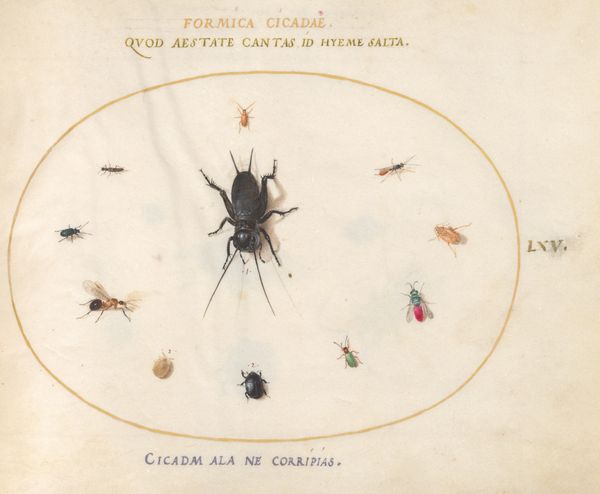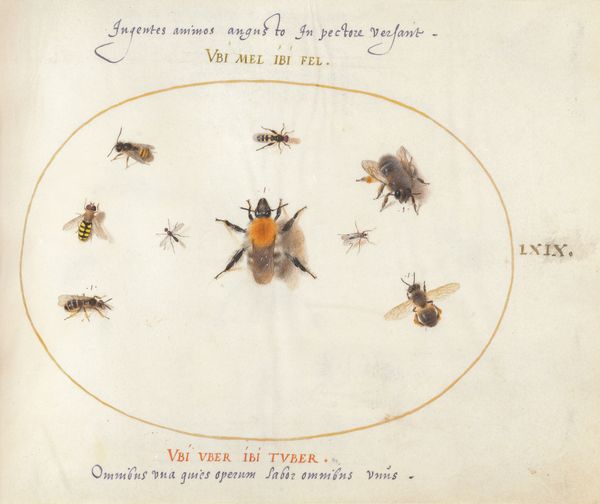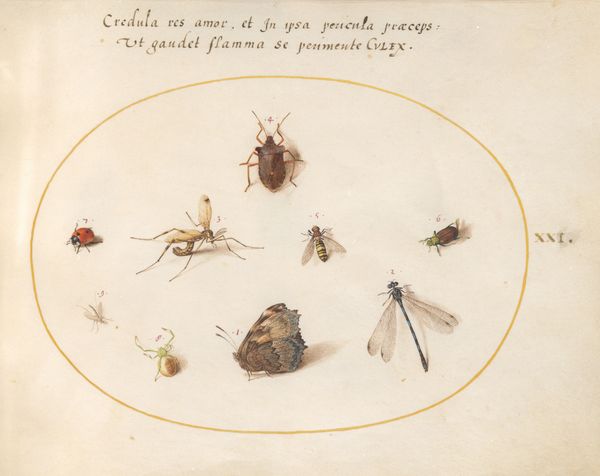
Plate 35: A Wolf Spider(?) and Three Other Spiders c. 1575 - 1580
0:00
0:00
drawing, coloured-pencil
#
drawing
#
coloured-pencil
#
11_renaissance
#
coloured pencil
#
history-painting
#
miniature
Dimensions: page size (approximate): 14.3 x 18.4 cm (5 5/8 x 7 1/4 in.)
Copyright: National Gallery of Art: CC0 1.0
Curator: Our next artwork is “Plate 35: A Wolf Spider(?) and Three Other Spiders,” a coloured pencil drawing by Joris Hoefnagel, dating from around 1575 to 1580. What's your immediate reaction? Editor: It's surprisingly unsettling, despite its small scale. There's something clinical and cold about the isolated figures against the blank space. Curator: Indeed. Hoefnagel’s technique involves painstaking detail, especially if you consider it’s done with colored pencils. The luminosity he achieves with this humble medium is noteworthy; his choice is intriguing. Editor: Interesting point about his access to resources and knowledge in material culture and global trade, considering that colored pencils were relatively expensive in Renaissance Europe. I am struck by the image’s structure. The formal arrangement creates a distinct visual hierarchy. The large wolf spider dominates, while the smaller ones appear almost like specimens displayed in a collection. The fine lines of their bodies contrast with the white paper in a unique and beautiful way. Curator: The artist's use of symbolism certainly demands exploration, with that Latin inscription "Magnus Dominus noster, et magna Virtus eius. Et sapientia eius non est numerus." Perhaps this arrangement is speaking to notions of the 'greatness of God' and 'his strength' mirrored in even the smallest aspects of nature, maybe linking to colonial patterns where every small thing is studied and consumed by western ideology and power. Editor: Fascinating interpretation! From a purely visual point, the artist seems primarily interested in taxonomy; there are subtle details that separate the various specimens shown within a circular boundary. Note the way he uses numbering—each tiny, hanging figure is identified—yet there’s also a surreal quality. The delicate line connecting the hanging specimens and those stylized fleur-de-lis, how strange. Curator: Yes, a definite ambiguity exists; scientific documentation versus symbolic display. Hoefnagel's spiders are more than mere creepy crawlies. They embody both observation and something else... a story of expanding control perhaps. Editor: This piece prompts an unnerving reflection, considering both its intricate artistic style and potential undercurrents of broader social context and the materials utilized in art production and trade in the early age of colonialism.
Comments
No comments
Be the first to comment and join the conversation on the ultimate creative platform.
